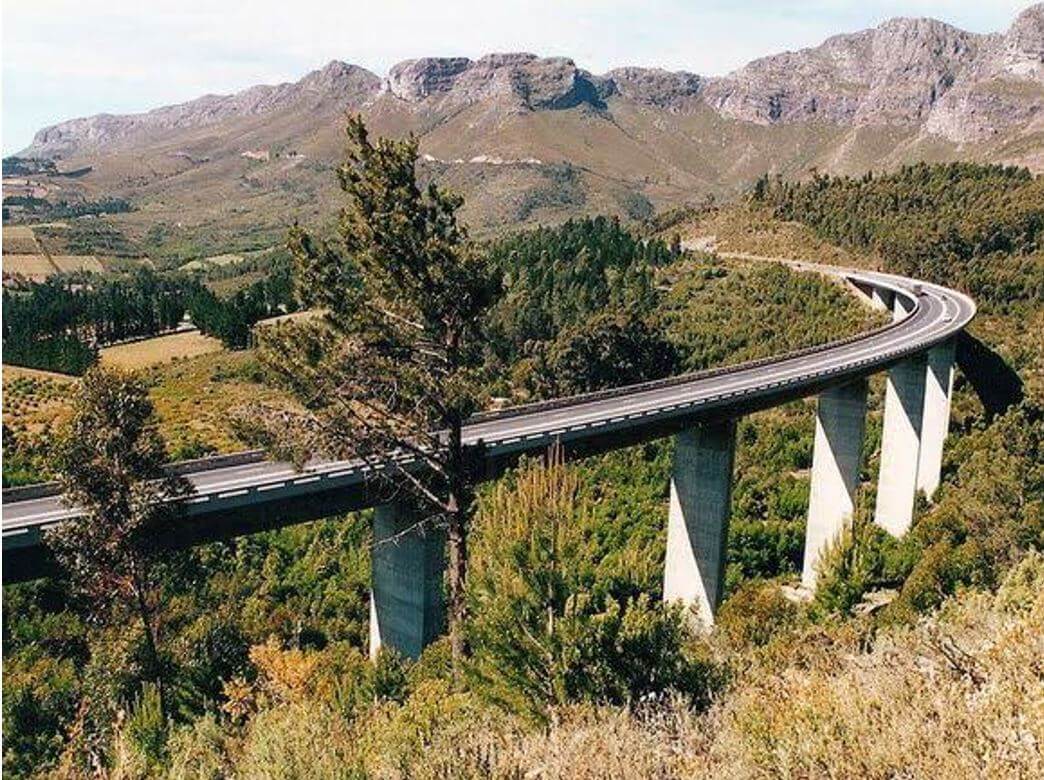Western Cape, South Africa
Living in Southeast Wisconsin, alongside Lake Michigan in the United States, where the countryside is flat, makes visiting southwestern South Africa around Cape Town and its environs exciting with its many majestic mountain ranges. You may get the impression that I am obsessed with the beauty of the mountain passes of the Cape with my blog describing Chapman Peak’s Drive, Boyes Drive, and Franschoek Pass.
There are more than 51,300 tunnels in the world with China (16,229) and Japan (9,760) being the most prolific. South Africa has ten vehicle tunnels and one rail tunnel. The most impressive, to me, is the Huguenot Tunnel on Du Toits Kloof Pass (gap in English) between Worcester and Paarl on the N1.
The N1 is a national route in South Africa that runs from Cape Town through Bloemfontein, Johannesburg, Pretoria, and Polokwane to Beit Bridge on the border with Zimbabwe. It is 1,929 kilometers (1,200 miles) in length.
Before 1825, farmers used the gravel pass to get to the interior beyond. P.A. De Villiers, an engineer, explored the idea of a road over the pass in 1930. The National Roads Board investigated the idea further in 1938 and finalized the route in 1940. The project started in 1941 and was completed in 1949. The vehicular-accessible Du Toits Kloof Pass was conceived by and named for Francois Du Toit, a 17th-century Huguenot pioneer. Originally 48 km (30 miles) long, the pass elevated to 820 meters (2,690 feet).
The 3.9 kilometers (2.5 miles) Huguenot Tunnel opened in 1988, reducing the distance of the old pass by 11 kilometers (6.8 miles). Driving time between Worcester and Paarl was reduced by 20 minutes. It is the largest curved structure in South Africa and operated as a toll road. The current (October 2019) toll charges R39.50 (US$2.65) each way. October 2021 R42.50 (US$2.83).
Geological surveys and design started in 1973, and excavation followed in 1984, tunneling from both ends using drilling and blasting. There were two phases to the tunneling, the first was a pilot tunnel to examine the route’s geographical obstacles. The second phase bored a 5-meter (16.4 feet) tunnel through granite rock as well as the construction of portals, drainage, and ventilation tunnels. The two drilling heads met with an error of only 3 mm over its entire 3.9 km length.
Leading up to the Huguenot Tunnel from its south side is an awe-inspiringly beautiful, high-altitude viaduct bridge (the first of its kind built in South Africa!) The bridge is simultaneously curved and cambered –constructed by the incremental method. It soars high above the farm-patch-worked valley.
Currently, the tunnel carries one lane of traffic in each direction. Plans are underway to open a second unfinished tunnel, the “northern bore,” to take eastbound traffic. It will allow for two lanes of traffic in each direction, with each tunnel carrying traffic in one direction only.
The old tollway free pass is still available to motorists and follows along Route 101.
Update December 11, 2023.

Photograph courtesy of Stan Sanetra, based in Cape Town, South Africa. “You can see in the bottom right-hand corner of the photo the entrance to the Huguenot Tunel. The road going over DuToits Kloof Pass The Huguenot Toll Tunnel provides a route through the Du Toitskloof Mountains which separates Paarl and Worcester in the Western Cape, South Africa. It is South Africa’s longest road tunnel. The 3,9km long tunnel was opened in March 1988 and is 11km shorter than the route across the pass.”
